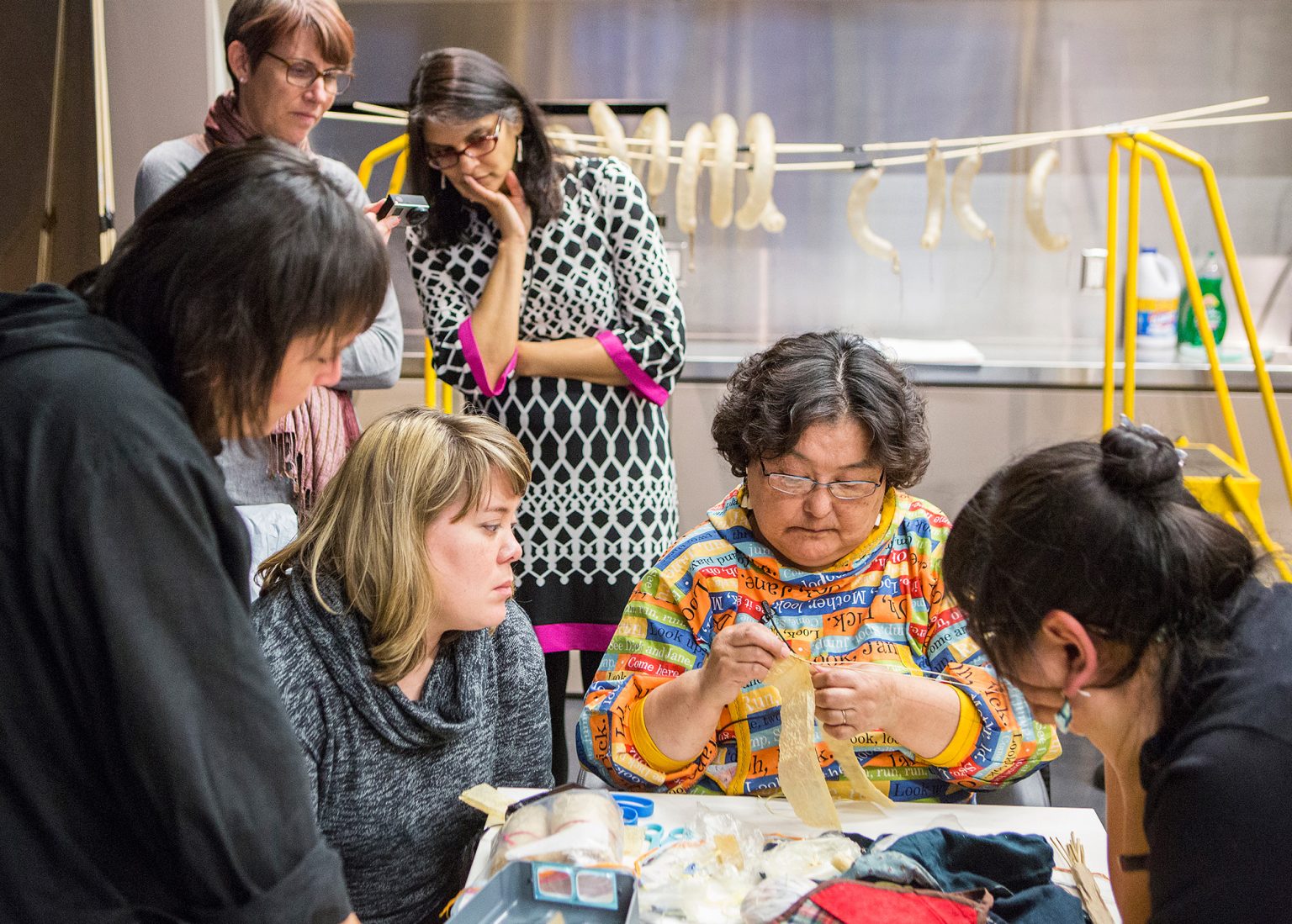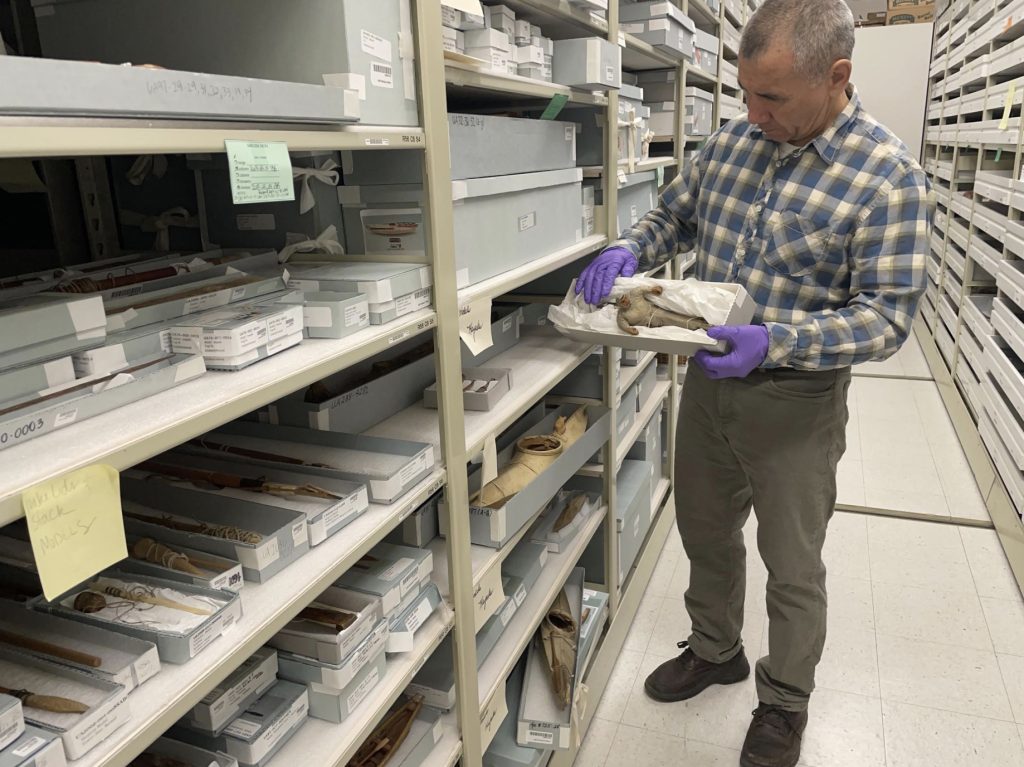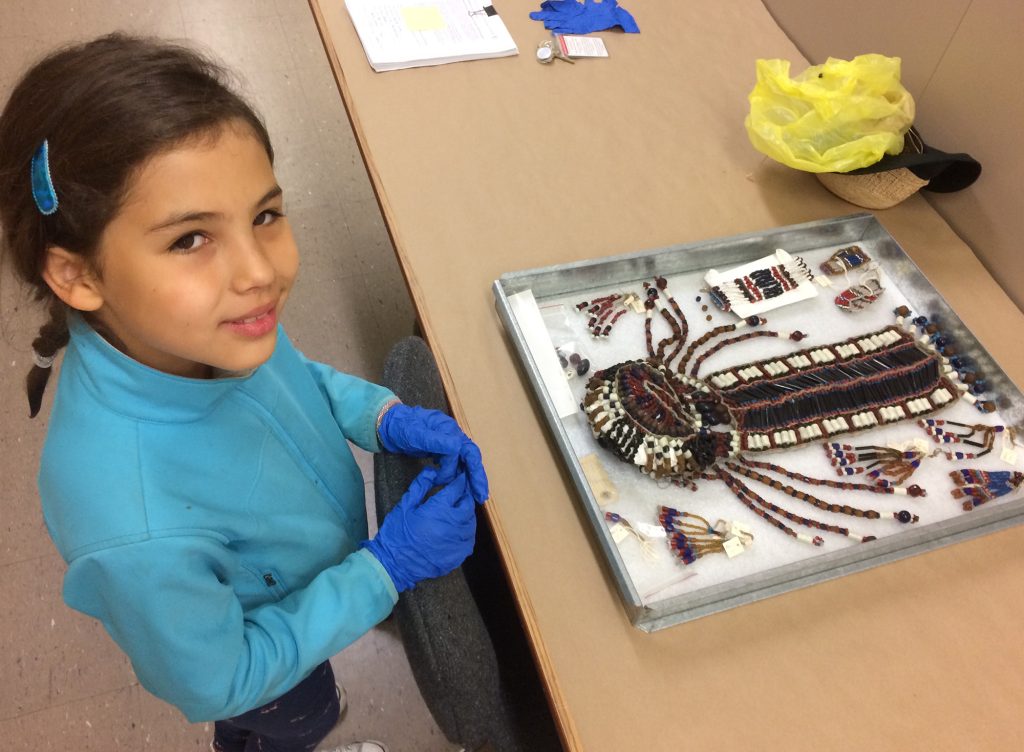Project Spotlight: Welcoming Alaska Native peoples into museum spaces as experts in their own cultural histories.

Dazhän akàndür dänkwänji ke shų nenàdhàt.
Material culture has served as a customary medium for Indigenous peoples
to pass on cultural practices and knowledge since time immemorial. Art
forms such as masks, baskets, regalia, tools, carvings and many other
examples of material culture hold knowledge, memories and stories that
connect generations past, present and future. They contain elements of
who we are and how we identify ourselves.
Much of Alaska’s historic material culture is held within museums spread throughout the world—in Russia, France, Spain, England, Finland and many other locations. In some cases, these belongings have been displaced and forgotten; in other instances they are remembered and deeply missed. Some collections are difficult to track down, while others are available for study through digital means or by visiting exhibitions. Despite the challenges with access, material culture continues to tell important stories for our communities. The study of material culture can inspire and teach new generations important information about cultural heritage, design elements, aesthetic principles, construction techniques and technologies.
Historically museums have collected, exhibited and cared for materials without much involvement from Alaska Native communities. Thankfully, we are in a period where this is changing as museums become more aware of the importance of working with Indigenous community members. There is much work to do to make space for Alaska Native voices and perspectives to be shared in these spaces.

The Alaska Native Museum Sovereignty initiative is built on the concept of recognizing that our arts and material culture are an expression of our cultural sovereignty. Museum sovereignty encompasses the idea that we have the right to determine how our material culture is represented within museum spaces. Museum sovereignty asserts the right to access and care for examples of our material heritage. It reflects our way of being, doing, seeing and thinking through and within museum spaces. Museum sovereignty acknowledges that our communities have our own ideas about caretaking for material culture, our own way of sharing stories, and our own aesthetic preferences. It recognizes that Native peoples are experts in our own cultural histories and experiences. The Alaska Native Museum Sovereignty initiative has the following goals:
- Sharing Alaska Native arts and stories using Alaska Native perspectives and voices;
- Increasing research and interpretation on historical collections held in museum repositories by Alaska Native community members;
- Helping to provide access to historical collection for our community members;
- Helping museums understand the ongoing importance of historical materials to living communities today.
What does museum sovereignty look like in practice? It looks like
Alaska Native peoples being welcomed into museum spaces as experts in
our own cultural histories. It looks like intergenerational
knowledge-sharing taking place within museums. It looks like Alaska
Native peoples caring for our cultural belongings using our own
protocols and community values.

Acknowledgements
This article was funded in part by a grant from the United States Department of State. The opinions, findings and conclusions stated herein are those of the author[s] and do not necessarily reflect those of the United States Department of State.
Find out more about Alaska Native Cultural Heritage and Artistic Sovereignty in Museums
here